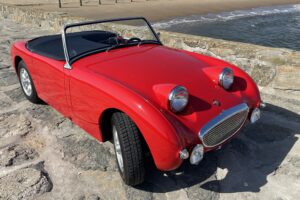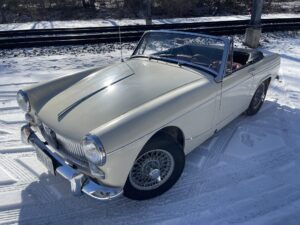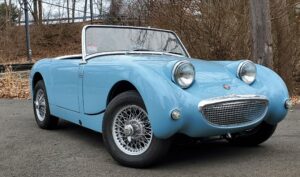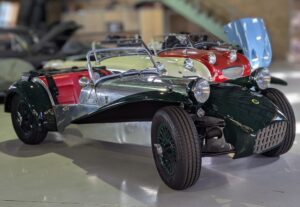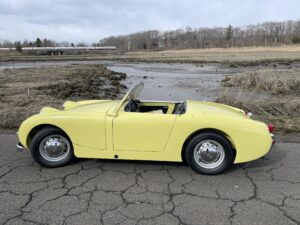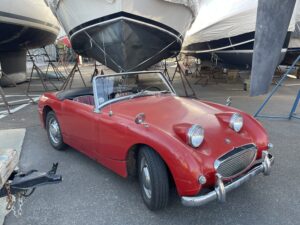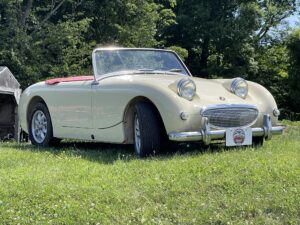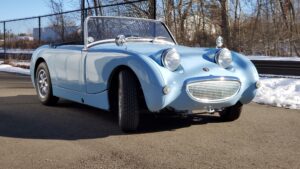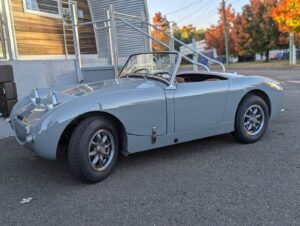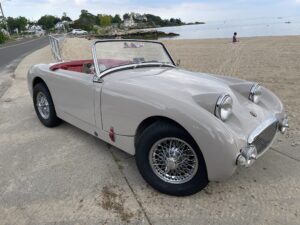We now have the motor installed in our second electric Bugeye. While working today on the new battery boxes, we couldn’t resist a face-off between 1275 petrol power and our AC electric wonder.
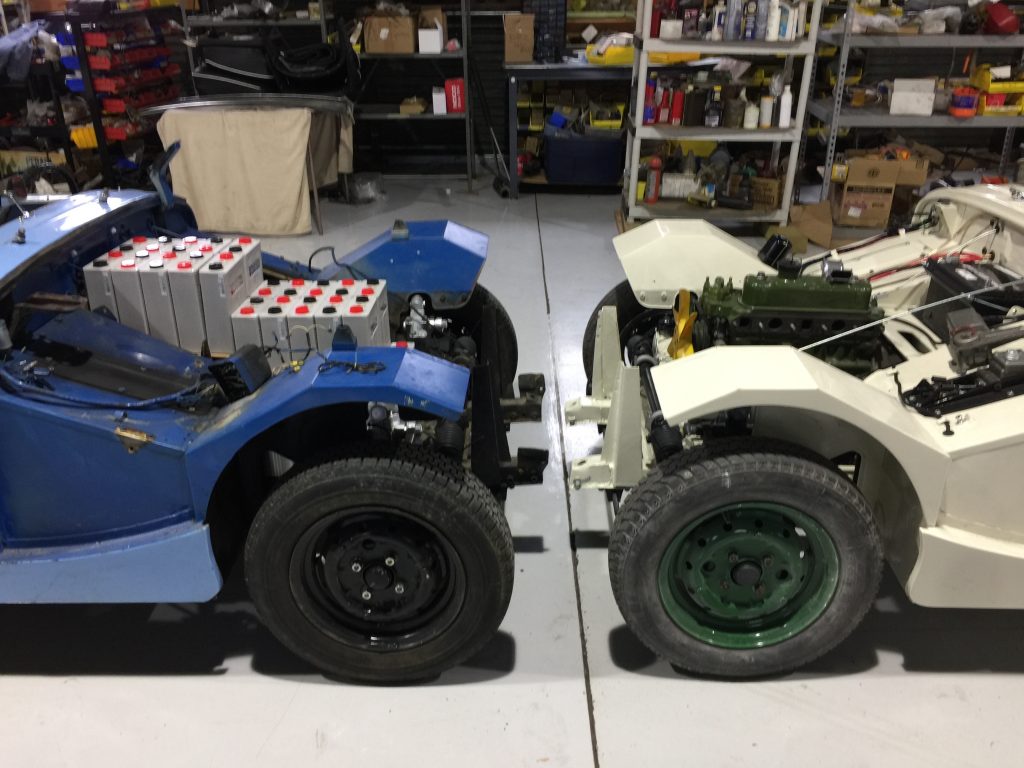
It may look like the batteries on the left are taller than the cast iron lump on the right, but you are looking at just the top two battery layers. Many more cells are concentrated beneath what you see, in front of the already low motor that lives about where the original smooth case would be parked (as shown below). Seventy percent of the batteries fill the frame in front of the motor. The rest live in the area formerly occupied by the fuel tank.
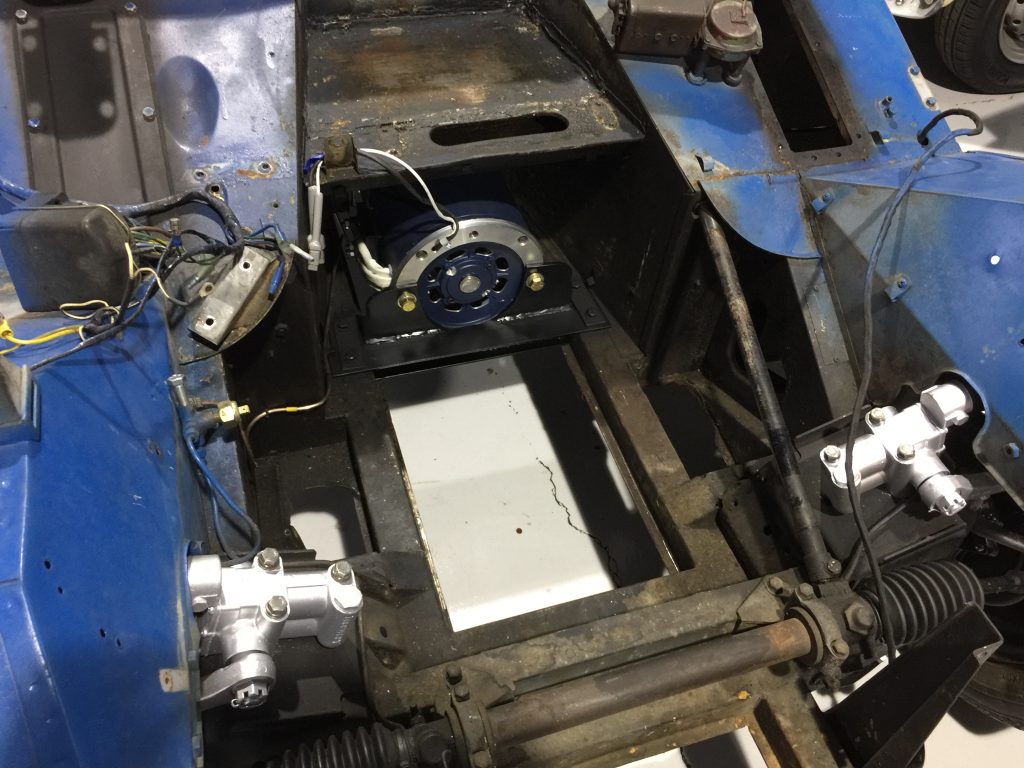
Below you can see the rear 30% of the batteries mocked-up out on a template of the fuel tank. This box will hang under the trunk and bolt to the original fuel tank studs. It equals the mass and volume of the original tank full of fuel, so we can retain the correct weight balance.
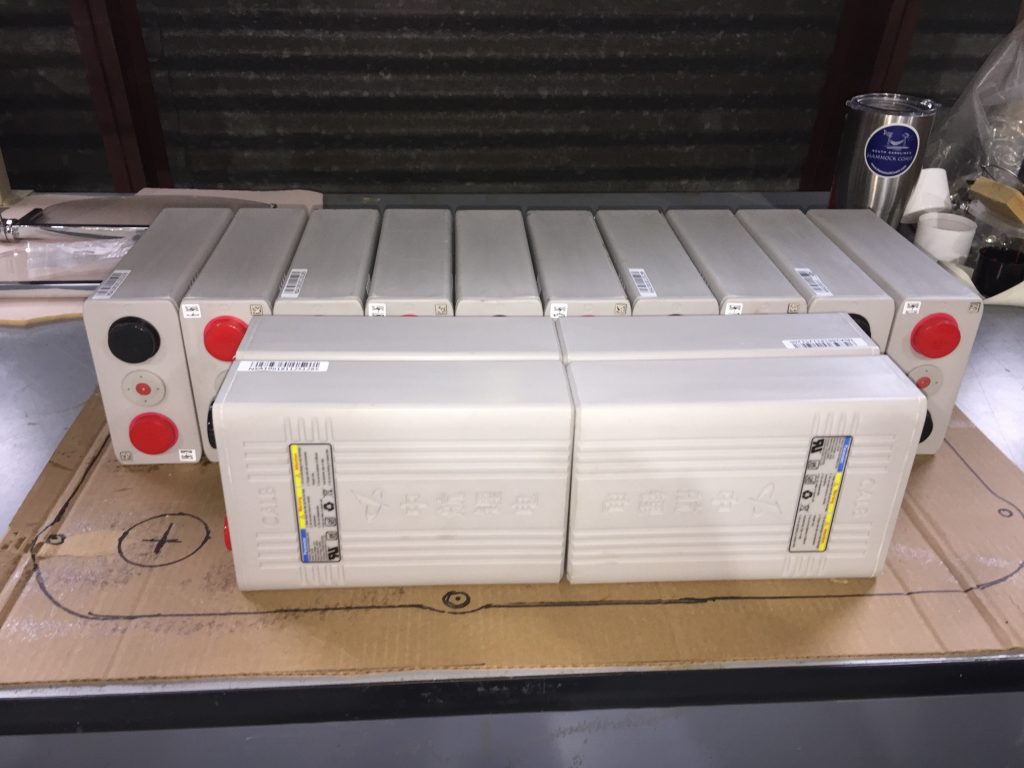
I remain very enthused by the smoothness and power of the electric platform. The electric motor is bullet-proof and incredibly simple in comparison to the array of moving parts and pieces under the hood of the 1275 powered car.

Most petrol-powered Bugeyes have a range of roughly 200 miles. I generally stop to re-fuel and stretch my legs every 150 miles on long gas-powered trips. Our FrogE’s range is shaping up to be closer to 125 miles (100 was originally expected). But Sprites are rarely used as long range cruisers, and more frequently driven around town for shorter stints.
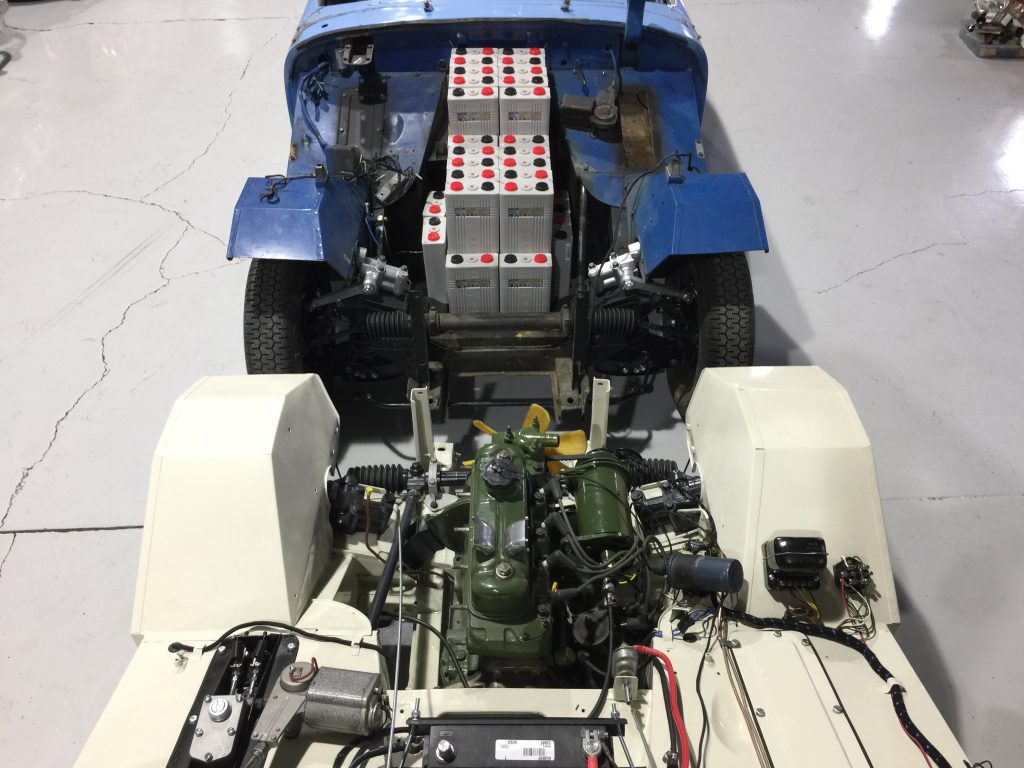
I am most impressed by the smoothness of electric. It’s refreshing to drive a Sprite with no engine vibration at any speed. The 948 was never known for smoothness, especially if it is not balanced. The electric motor does what all electric motors do, it just hums.
I still can’t get used to the lack of oil leaks.
We are stocking-up on components so we can offer kits and more conversions in the near future. We’re working to perfect the electric option, and to offer electric alongside our gas powered options, for many years to come.
